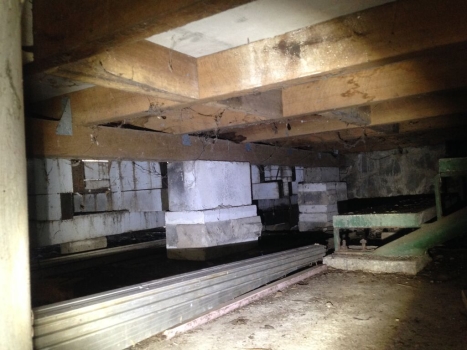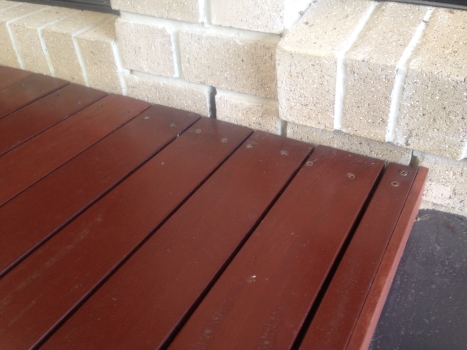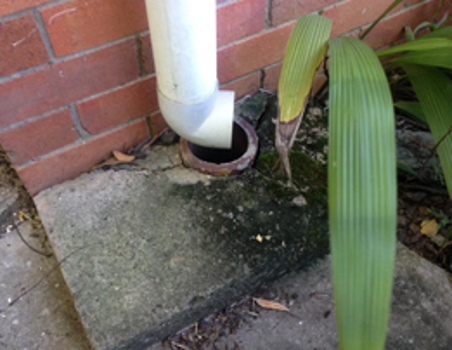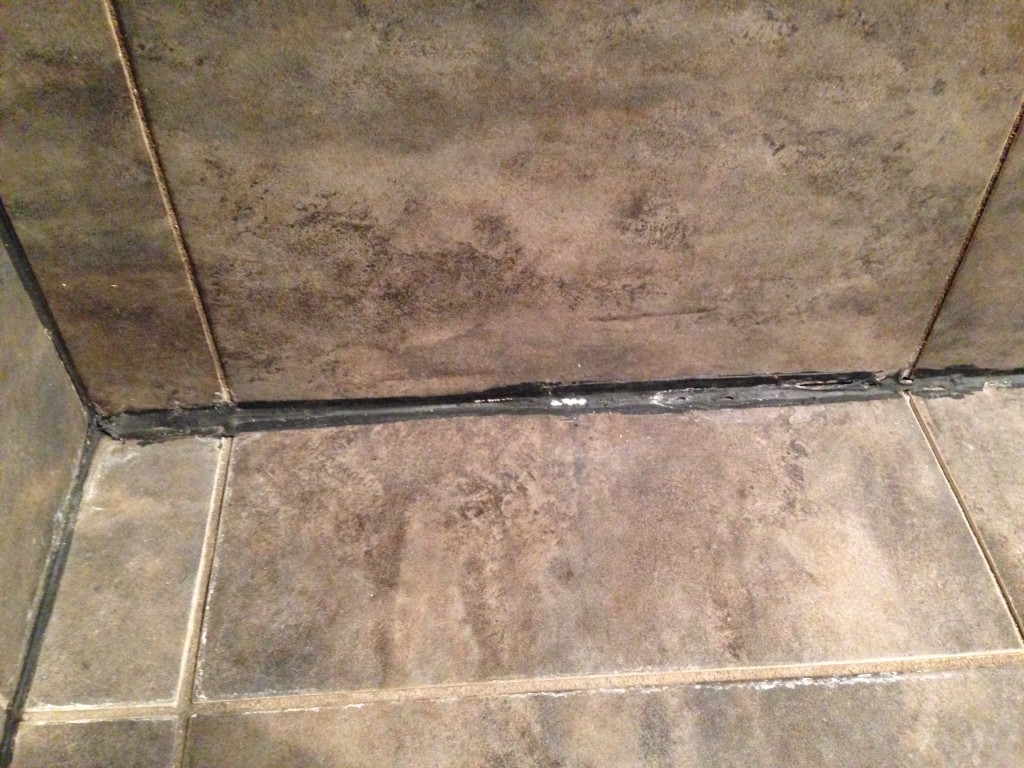Structures with cracks
Cracks can occur anywhere in a building or other structure at any time, especially where less flexible building materials such as masonry, bricks, blocks, concrete and rendered surfaces (including mortar and plaster) are in place. These kinds of cracks, which we come across on a regular basis during the carrying out of our inspections, are normally in the vicinity of 1 to 3 mm in width and on rare occasions they exceed 5 mm. Such cracks usually arise from foundation (ground) movements, due to ground shrinkage during drought periods or ground swelling (during persistent rain periods). Other factors also may play a part in these can include impact from tree roots and inadequate footing design, preparation and installation during construction. There is an Australian Standard which is specifically designed to outline the parameters for footings of residential structures: AS: 2870 – 2011 (Residential Slabs and Footings).
The foundation material constructed on within the Brisbane area is mostly reactive clay and often this can be highly reactive and in the worst cases extremely reactive. Obviously structures built on reactive soils will move accordingly with the soil movement during differing climatic conditions. The more movement that occurs the more chances of cracking being present, due to the fact that masonry is a inflexible material and simply has no ability to absorb the movement of the ground and rather can only crack under the stress. Whilst building and engineering standards have improved in recent years, it is acknowledged that with the reactive foundation material expanding or shrinking, subject to the weather conditions, it is nearly impossible to guarantee the construction of a residential property and have no cracking occur post completion.
The Australian Standard has a table listing the classification of damage pertaining to cracking in masonry. It is shown below:
Categorization of Cracks in Australian Standard AS:2870 – 2011 (Residential Slabs & Footings)
Appearance Defect: Where in the opinion of the Consultant the only present or expected consequence of the cracking is that the appearance of the element is impaired.
Serviceability Defect: Where in the opinion of the Consultant the present or expected consequence of the cracking is that the function of the building element is impaired e.g. windows or doors not opening/closing properly or water entry through building element which should not otherwise occur.
Structural Defect: Where in the opinion of the Consultant the present or expected consequence of the cracking is that the structural performance of the building element is impaired or where the cracking is the result of the structural behaviour of the building.
Based on the advice within the standard, cracks in residential structures are not deemed to be of a serviceability type nature until they gets to around the 12 to 13 mm mark in width. Up until this point they are referred to as being an appearance type defect and of no structural or serviceability effect on the property. Based on the information within this standard, the overwhelming majority of cracks that are seen in properties are classified as being of no structural significance. This is because the majority of these are known as hairline cracks and range between 1 to 3 mm for the most part, but can be bigger. Over the years we have seen significant amount of anxiety from our clients in relation to cracking, which is in total contradiction to the advice of the Australian Standard, which clearly outline the minimum size of a crack before determined to be of a serviceability or structural nature on a building is around 12 to 13 mm. It is extremely rare to find cracks in structures when we are carrying out inspections anywhere near in excess of 5 mm.
For the most part, cracking in structures is usually found in the slab on ground style of construction although the isolated pier footing system (e.g. concrete stump, high set construction) is not immune by any means from foundation movement affecting the footing and causing cracking in a structure either internally within plasterboard walls or externally in the cladding materials. In all cases, where any cracking on structures is identified, legal necessity demands that we had advise you to seek the immediate advice of a Registered of Queensland Professional Engineer. Legal precedents have determined that only consultants with this level of qualification and expertise is legally deemed to be able to provide as a consumer with advice that can be relied and acted upon in relation to any structural matter.
In recent years the level of cracking on residential structures has greatly reduced through a combination of reasons and some of these include a better standard of engineering, a higher level of workmanship at the time the footings are prepared and poured and an increase in quality of the actual material being used and particularly where render is involved as it is far more flexible in today’s standards compared to years, by which can obviously absorb some of the foundation movement and therefore not crack as quickly as past years.
There is some excellent documentation available about cracking and residential structures and some can be obtained in the following areas:
- The CSIRO have produced an Information Sheet 10-91 titled “A guide to homeowners on foundation maintenance and footing performance.’ Please refer to www.publish.csiro.au or CSIRO Publishing, Victoria Ph. 1800 645 051. SAI Global, can also provide further details in the Australian Standard AS: 2870-2011 – ‘Residential Slabs and Footings’.
- The Queensland Building and Construction Commission (ex ‘Queensland Building Services Authority’) also provide a Fact Sheet which can be downloaded from their web.
It is recommended that all homeowners especially where bricks, blocks, masonry or concrete materials have been used in a building, obtain a copy of these publication as there are some excellent advice in relation to being proactive and putting the best conditions in place to assist with minimising the risk of cracking occurring.








 All too often during our inspections we identify areas which are conducive to the collection of retained ground moisture near a structure. Elevated moisture levels are known to provide conditions favourable to Timber Pest activity, particularly termites, and it is vital that every effort be made to avoid these risks. The most common causes of retained ground moisture are inadequate surface water drainage, downpipes not connected to drainage outlets, no gutters in place for roofing areas, outlet pipes for air conditioners, relief and overflow valves for hot water cylinders, corroding and join leakages of gutters and downpipes, defective or incomplete flashing and plumbing for rainwater tanks leaking. These are all issues which can be, and should be rectified, if they are in existence at a property.
All too often during our inspections we identify areas which are conducive to the collection of retained ground moisture near a structure. Elevated moisture levels are known to provide conditions favourable to Timber Pest activity, particularly termites, and it is vital that every effort be made to avoid these risks. The most common causes of retained ground moisture are inadequate surface water drainage, downpipes not connected to drainage outlets, no gutters in place for roofing areas, outlet pipes for air conditioners, relief and overflow valves for hot water cylinders, corroding and join leakages of gutters and downpipes, defective or incomplete flashing and plumbing for rainwater tanks leaking. These are all issues which can be, and should be rectified, if they are in existence at a property.







